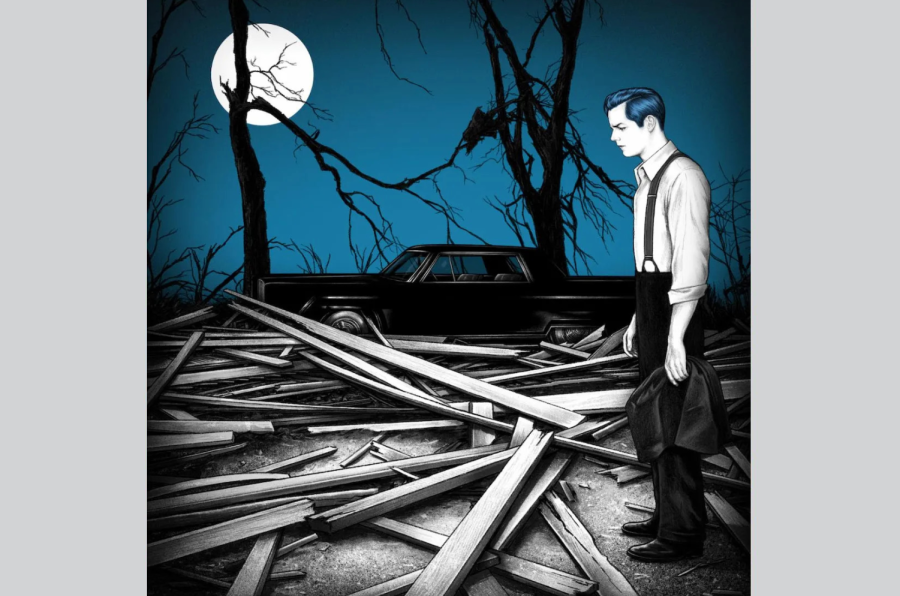Jack White’s experimental style falls short in ‘Fear of the Dawn’
Third Man Records
Jack White released his fourth solo studio album, “Fear of the Dawn,” in April 2022.
May 24, 2022
There is a moment in the middle of the song “Into the Twilight” in Jack White’s newest album “Fear of the Dawn,” where the voice of novelist William S. Burroughs ruggedly asserts “When you cut into the present, the future leaks out.” The late author is credited with spreading the style of “cut-up writing.” In this method he would write down his various ramblings and ideas, then cut the very sheet of paper they lay on, and rearrange the scraps to create a new patchwork story.
Jack White, the lead singer and producer on the 12-track album released April 8, has clearly embodied this disorganized and avant-garde style of writing into his fourth solo album “Fear of the Dawn,” a chaotic, at sometimes dissonant, musical mess. Yet despite the innovativeness, the music is hard to listen to.
“Into the Twilight” conjures the early days of jazz by opening with scatting from the Grammy Award-winning jazz group The Manhattan Transfer. The voices swap scatting for the brassy, electronic and unsettling repetition of “Here in the twilight, here in the night, everything’s right.” Mr. White echoes the patchwork style of Mr. Burroughs when, halfway through the song, the clunky striking of a piano disrupts the song. This creates an almost five-minute long messy collage of jazz, nu-metal and classic rock.
Mr. White again attempts to re-imagine the beginnings of jazz in “Hi-De-Ho” where he sampled famed jazz artist Cab Calloway’s scatting to open the song. The scatting is looped and manipulated until it becomes an almost unsettling chant. The only lyrics are of hip-hop artist Q-Tip, who raps about nicotine, Stevie Wonder, and a snarky nod to a past record label. Albeit interesting and catchy, the lyrics seem to fight for dominance with the background track of synthesizer and an annoyingly slow drum beat.
The song “The White Raven” is comparable to shoving antibiotics down the throat of an elderly cat recovering from a kidney infection. The lyrics are more shrieked than sung, and again we hear that the rhythm of the background track seems to compete with the words. This makes it one of the harder songs to listen to on the album.
Jack White’s intentions are clear. He wanted to take a plethora of different music styles and somehow make them work together to create a patchwork quilt of an album. The quilt is there, but the seams that hold the patches together are falling apart, ruining the structural integrity altogether. The idea of the album is interesting, but the delivery can range from unsettling to downright boring, leaving a staggering mess of an album.












